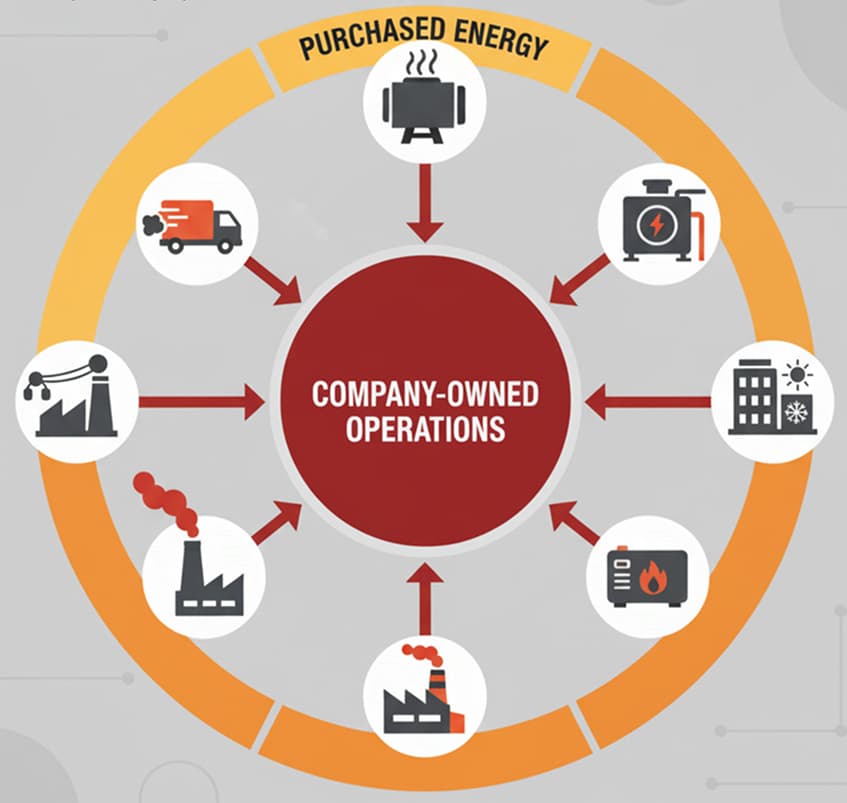Scope 2 Emissions Explained (and How to Reduce Them)
Scope 2 emissions are the indirect greenhouse gases from purchased electricity, heat, steam, and cooling. They’re often your biggest lever for credible renewable energy procurement.

What Are Scope 2 Emissions?
Scope 2 emissions are the indirect greenhouse gas emissions that come from the electricity, steam, heat, or cooling your organization purchases. In other words, they don’t come directly from your own boilers, vehicles, or factories (that’s Scope 1), but from the power plants and utilities that generate the energy you use every day.
Think about the lights in your office, the servers powering your data center, or the HVAC system keeping your warehouses running. Even though your company doesn’t operate the power station, the emissions created to deliver that energy are attributed to you as Scope 2.
Scope 2 vs. Scope 1 and Scope 3
To put Scope 2 in context:
- Scope 1: Direct emissions from owned or controlled sources (e.g. company vehicles, on-site fuel combustion).
- Scope 2: Indirect emissions from purchased energy (e.g. electricity, heating, cooling).
- Scope 3: All other indirect emissions across the value chain (e.g. supplier emissions, product use, business travel).
📊 Most organizations find Scope 2 makes up a significant portion of their total footprint, often second only to Scope 3. That’s why it’s a major focus for SBTi targets, CDP reporting, and renewable energy strategies.
Learn more about scope 1, 2 and 3 emissions.
Industry-Specific Scope 2 Guidance
Every industry faces unique challenges and opportunities in managing Scope 2 emissions from purchased electricity, heat, and steam. While the fundamental goal remains consistent—transitioning to zero-carbon energy sources—the pathways to achieve this vary significantly based on operational requirements, energy intensity, and infrastructure constraints.
Why Your Industry Matters
Manufacturing facilities operate energy-intensive equipment around the clock. Data centers require uninterrupted power for critical digital infrastructure. Office buildings must balance comfort with efficiency across diverse tenant needs. Technology companies manage complex global operations with rapidly scaling energy demands. Each sector requires tailored strategies that acknowledge these realities while driving toward ambitious climate goals.
Sector-Specific Solutions
Our comprehensive industry guides provide actionable strategies designed for your specific operational context. Whether you're managing a production facility seeking to integrate on-site renewables, operating a data center pursuing 24/7 carbon-free energy, optimizing commercial real estate portfolios, or scaling a technology business while maintaining net-zero commitments, you'll find relevant best practices, implementation frameworks, and proven solutions.
Explore Industry-Specific Scope 2 Guidance →
Discover detailed strategies for:
- Manufacturing and industrial operations
- Data centers and digital infrastructure
- Commercial offices and real estate
- Technology companies and IT services
Each guide includes practical implementation roadmaps, technology solutions, financial considerations, and real-world case studies from industry leaders achieving zero Scope 2 emissions.
